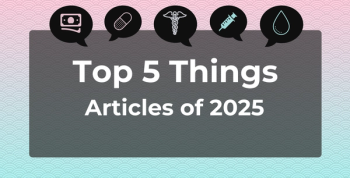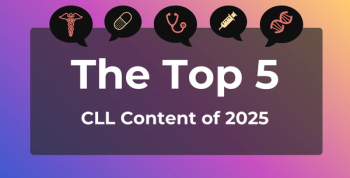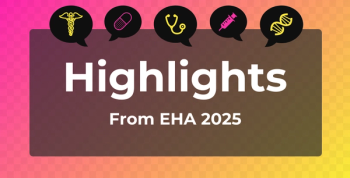
Sexual, Gender Minority Communities Misperceive Risk of HIV
Key Takeaways
- Sexual and gender minorities in North Carolina face low PrEP prescription rates despite high HIV risk behaviors, with stigma and healthcare mistreatment as barriers.
- Surveyed participants showed high awareness of PrEP (78.5%) but low prescription rates (15.1%), with cisgender men more likely to be prescribed PrEP.
A new study shows low rates of pre-exposure prophylaxis (PrEP) prescribing to sexual and gender minority individuals living in North Carolina, indicating barriers like stigma and a misperception of risk as reasons for not using PrEP.
Sexual and gender minorities living in North Carolina had low rates of being prescribed pre-exposure prophylaxis (PrEP) despite a significant percentage having an increased risk of
The Southern region of the US is a region with an increased rate of HIV diagnoses compared with the rest of the country.2 Cisgender men who have sex with men and transgender women make up the largest number of those who have been diagnosed with HIV. PrEP is a means of preventing HIV in those who engage in behaviors with an increased risk of acquiring HIV, but their use of PrEP has lagged. This study aimed to identify the sexual and gender minority groups that had the highest risk of HIV and evaluate their knowledge of PrEP.
The study was conducted by administering a survey to assess participants’ risk behaviors for HIV, their perceived risk of HIV, barriers to starting PrEP, and their perception of PrEP. Those who listed at least 1 HIV acquisition behavior and did not report PrEP use were determined to be at increased risk of HIV.
Participants were 18 years or older, did not have a diagnosis of HIV, lived in North Carolina, and identified as a sexual or gender minority. Participants were recruited through advocacy and community-based organizations for sexual and gender minorities, as well as through messages in electronic medical records. Surveys were completed between June and November 2021.
There were 372 participants who completed the survey, although not all questions needed to be answered to complete the survey. The respondents had a mean age of 38.5 (range 18-82) years, nearly 40% were gender minorities, and 98.7% were sexual minorities. A total of 85.5% were White, 75.3% were financially secure, 79.8% had a college degree or higher, and 94.9% had health insurance. However, 20.4% also reported a history of homelessness. Durham (43.6%), Wake (24.5%), and Orange (8.3%) counties were the counties with the most participants.
A total of 30.9% of the participants claimed to have engaged in at least 1 behavior that would increase their likelihood of HIV, with only 22.6% of those who reported that behavior also being prescribed PrEP. Further, only 15.7% of those who had performed those behaviors that increased their likelihood of HIV had perceived their risk of HIV to be high.
Cisgender women were less likely to endorse any behaviors that could lead to the acquisition of HIV but only 11.4% believed themselves to be at increased risk if they endorsed behaviors that increased risk of HIV. Behaviors that increased risk of HIV were more likely to be endorsed by nonbinary participants (37.7%) although only 11.5% believed that they were at increased risk. HIV risk behaviors (11.9%) and perceived increased risk (36.8%) were both more likely to be endorsed by cisgender men. Four of the 17 transgender women (24%) endorsed behaviors that could lead to HIV acquisition and only 1 of them perceived herself to be at an increased risk of HIV.
A total of 78.5% of the participants were aware of PrEP but only 15.1% had ever been prescribed PrEP. Cisgender men were mostly likely to be aware of (93.4%) and prescribed (34.4%) PrEP; no nonbinary participant had been prescribed PrEP. PrEP was most commonly prescribed by primary care providers (69.6%).
A physician’s suggestion to use PrEP would be very important to 46.4% of participants, but barriers to PrEP included financial cost (56.6%), frequent follow-up appointments (27.1%), concerns about adverse effects (47.4%), and medication interactions (36.2%). A total of 13.9% of participants thought about the stigma surrounding PrEP and some worried about telling physicians and loved ones about using PrEP. A total of 10% cited mistreatment by a medical provider as a reason to avoid care.
This study had some limitations. There was a small sample siz, which could limit generalizability. Participants who reported being genderqueer, nonbinary, agender, and 2-spirit gender identities were all classified as nonbinary, which could have affected the results. The PrEP stigma scales used for this study were only previously used with cisgender men who have sex with men. Also, participants may have been more inclined to participate if they were aware of PrEP, and dome participants may have been put into the “increased risk of HIV” group based on their responses even the responses may not have accounted for nuance in responses. More of the participants were White and the participants were more educated compared with the state as a whole. Most of the participants also lived in urban areas.
The researchers concluded that a variety of sexual and gender minorities were at increased risk of HIV without the use of PrEP. “It is important to ask all of our patients about behaviors that increase HIV acquisition risk, and health care settings must be made safer for and more affirming of [sexual and gender minority] patients,” the authors wrote. “A the same time, greater efforts should be made to promote PrEP to diverse [sexual and gender minority] populations, including bisexual women and nonbinary people.”
References
1. Cunningham HE, Davis DA, Burns CM, et al. Preexposure prophylaxis to prevent HIV acquisition: perceptions among sexual and gender minority individuals in North Carolina. South Med J. 2025;118(7):357-364. doi:10.14423/SMJ.0000000000001852
2. U.S. Statistics. HIV.gov. Updated February 21, 2025. Accessed July 22, 2025. https://www.hiv.gov/hiv-basics/overview/data-and-trends/statistics
Newsletter
Stay ahead of policy, cost, and value—subscribe to AJMC for expert insights at the intersection of clinical care and health economics.







































